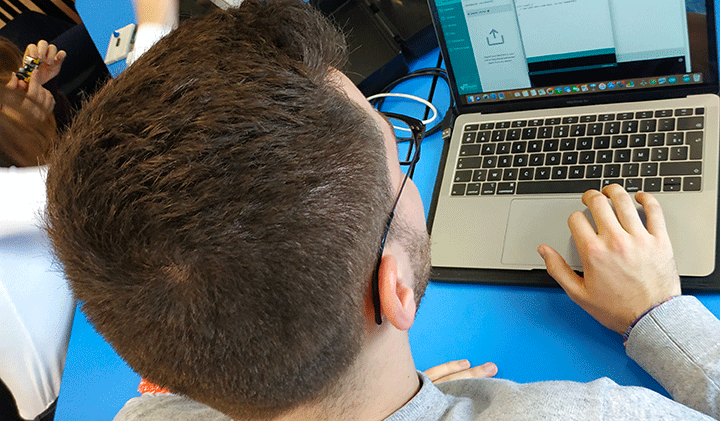The whole of Pole’s teaching and administrative teams are mobilized to provide uninterrupted learning at ESILV. Courses and labs were adapted to online tuition, in response to the coronavirus outbreak and to the decision to close schools temporarily. ESILV’s faculty offer real-time video classes, online courses, and new digital initiatives have been launched to ensure that no one is left out.
Starting from 16 March, all the 6,500 students of the three schools, EMLV, ESILV and IIM, already had access to online teaching thanks to the digitisation of teaching methods that has been taking place for several years.
« Digitisation has been placed as a major strategic orientation of the Pole Leonardo de Vinci. Major investments have been made with this objective in mind, in particular with the creation of a digital teaching department and the deployment of tools to digitize the entire teaching process (Learning Management System) and to create interactive online teaching.
The teams were massively trained and were able to carry out full-scale tests during the transport strike last December. This long-standing work made it possible to rapidly switch to a pedagogical and administrative continuity plan, making it possible to provide almost all of the teaching, including classes requiring face-to-face interaction.» (Pascal Brouaye, Managing Director of the Pole Leonardo de Vinci, Director of ESILV)
Digital tools at the service of remote learning
Digital learning tools have been deployed within the schools of the Pole Leonardo da Vinci for several years now, as part of the development of flipped classroom/ inverted classroom model. Instead of doing homework outside of class and coming to class to hear the professor lecture, the student review lecture materials before class as homework and comes to class to practice the independent work that would have previously been completed at home. Remote teaching has been made possible by these tools.
In particular, ESILV can rely on a dedicated team of course designers who, throughout the year, maintain a panel of pedagogical tools and train teachers in using it: learning management system, video studio, online collaborative tools, and so forth.
The objective of these tools is to provide all students with a high-performance and coherent distance learning environment. Just to name a few tools :
- Devinci Online: LMS (Learning Management System) running on the Brightspace platform which gathers all the training modules given to students.
- Zoom: videoconferencing tool deployed on a large scale at all the levels to provide online courses
- Teams: a collaborative tool for teamwork
- Yammer: internal social network, used for administrative and pedagogical monitoring of students and to ensure continuity of exchanges between pedagogical teams and students.
- The full Microsoft Office suite online including Word, Excel, Powerpoint, One Drive available in free access for all students of the Pole
- Free access to Scholarvox digital library
Digital initiatives on the student side of the equation
Student associations are also mobilizing to enable uninterrupted learning. For example, Leo Learning, the Volunteer Students Tutoring Association of the Pole Leonard de Vinci has set up a Discord server to continue to support student engineers in their educational path.
A screenshot of the Leolearning anounce on Yammer
Continuity of administrative and pedagogical follow-up and recruitment processes
After the closure was announced by the Ministry of Education, the pedagogic and administrative staff who ensure the follow-up of both French and foreign students and the activities related to international exchanges, internships, and work-study contracts have switched to remote working.
Admissions and recruitment activities for prospective students also continue, with a remote admission process and online admission interviews, and webinars instead of the traditional open days live events.
This post was last modified on 7 April 2020 5:23 pm






